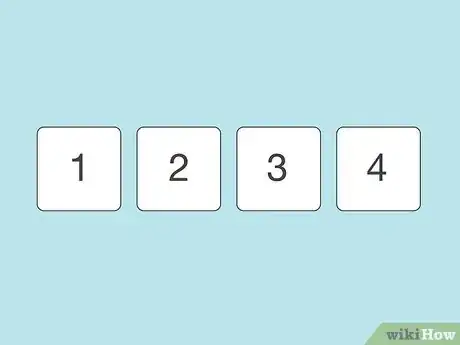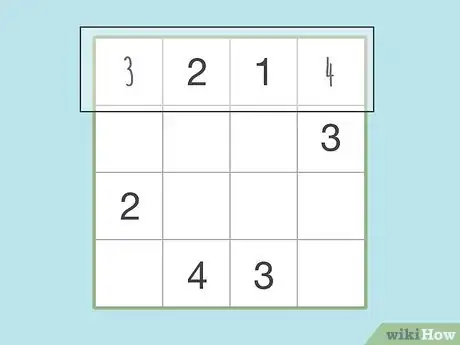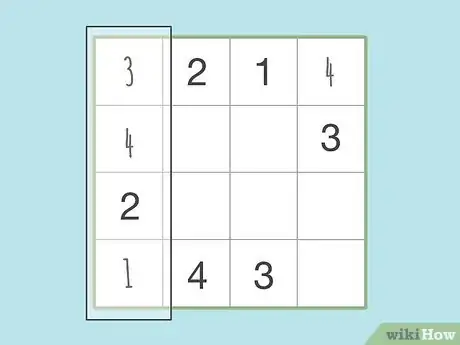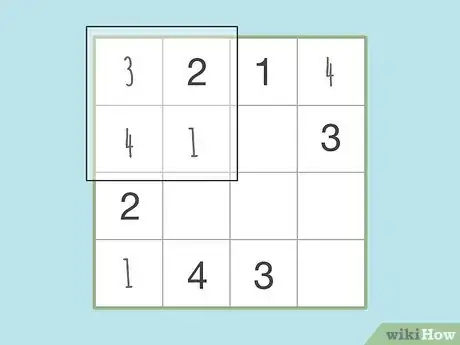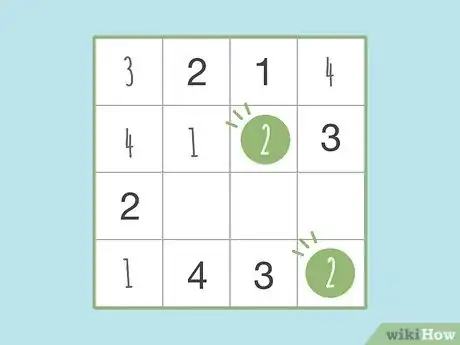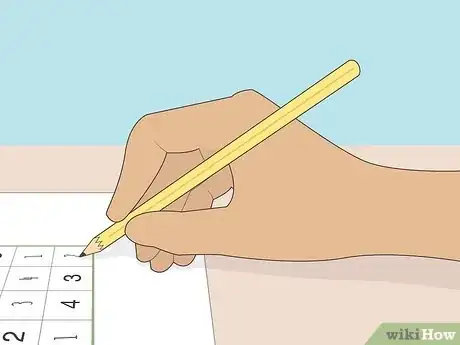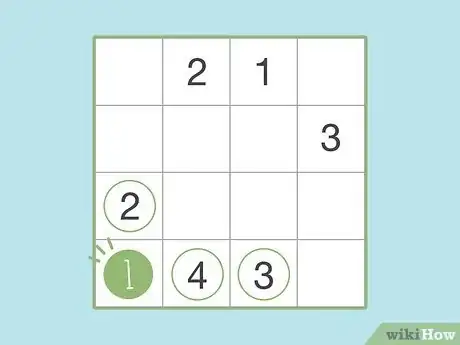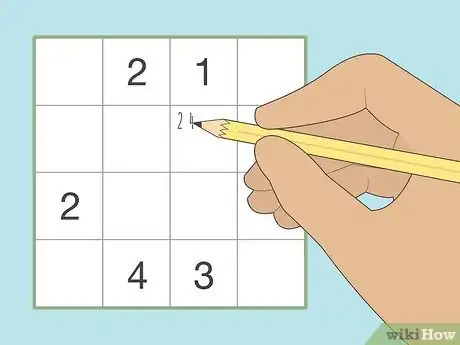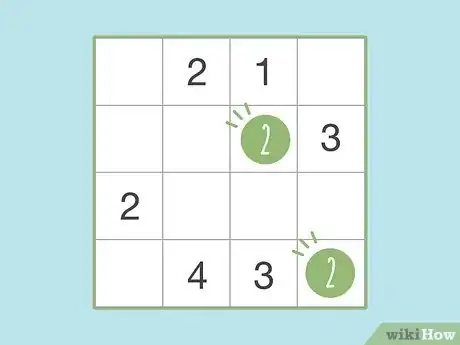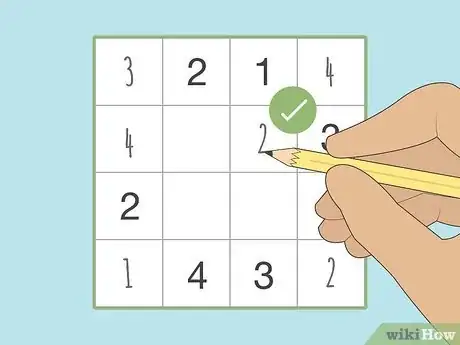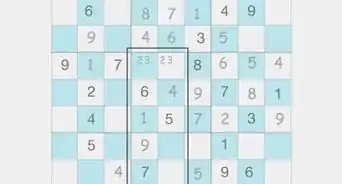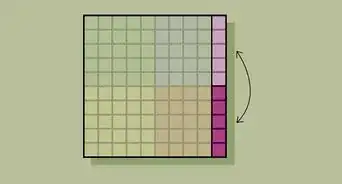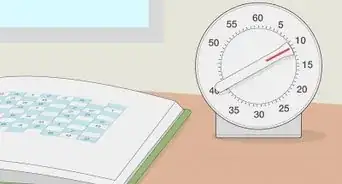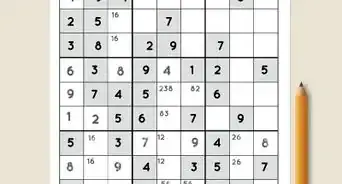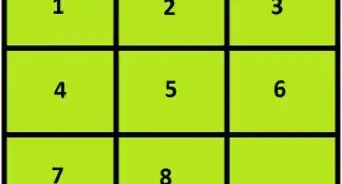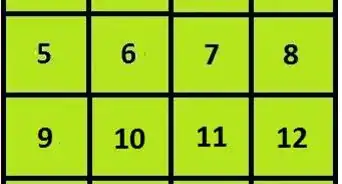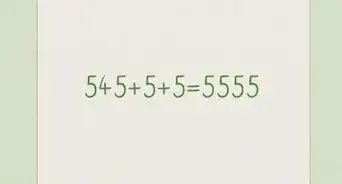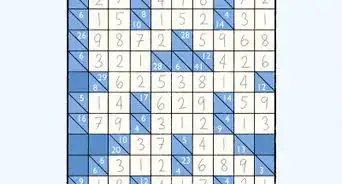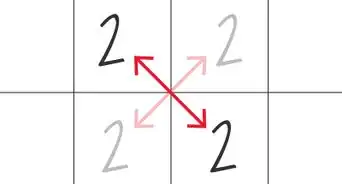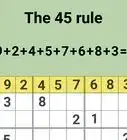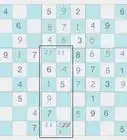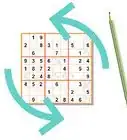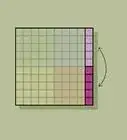This article was co-authored by wikiHow staff writer, Caroline Heiderscheit. Caroline Heiderscheit is a Staff Writer for wikiHow living in Santa Monica, CA. She has two years of experience working in content, including a year of editing work for first-time novelists. Caroline graduated from Stanford University in 2018 with degrees in American Studies and Creative Writing.
This article has been viewed 33,233 times.
Learn more...
Sudoku helps kids sharpen their math and critical thinking skills, so if you’re looking to teach a child to solve these exciting puzzles, that’s amazing! For beginners and kids as young as 5 years old, 4x4 puzzles can be a great way to make Sudoku more accessible. Plus, when your little one is ready for more of a challenge, the same principles apply to the 6x6 and 9x9 Sudoku puzzles. For all the very best tips on how to teach a kid to play Sudoku, read on.
Steps
4x4 Sudoku Basic Rules
-
1Solve 4x4 Sudoku puzzles using only the numbers 1-4. In a 4x4 Sudoku puzzle, answer every square with a whole number between 1 and 4. Examine the "clues" (or, the numbers provided by the puzzle). The clues will also always be a whole number between 1 and 4.[1]
- For the 9x9 Sudoku puzzle, answers will be any number between 1 and 9.
-
2Use each number just once in a single row. To solve a 4x4 puzzle, arrange the numbers so no number repeats itself in the same row. At the same time, ensure that every number is used at least once in each row.[2]
- So for example, a row filled in with the sequence (1, 3, 1, 4) is incorrect—because it excludes 2 and repeats 1.
- The sequence (1, 3, 2, 4), though, works for a single row.
Advertisement -
3Use each number once in a single column. Arrange numbers 1-4 in a single column to solve a 4x4 Sudoku puzzle. Ensure that in each column, every number is featured once. Double-check that no numbers repeat themselves in the same column.[3]
- So, a possible row (4, 3, 1, 2) could intersect with a possible column (1, 3, 2, 4).
-
4Use each number just once in a single square. In addition to rows and columns, there are also four boxes with four squares total in each. Within these squares, arrange the numbers 1-4 so that no number appears twice in the same box. Ensure that each number appears once in each box.[4]
- So, if a box already contains three numbers (1, 3, 4), then the last square in the box has to be 2.
-
5Solve the empty squares using the provided clues. Don't attempt to move or change the provided clues. Instead, use these numbers to solve for the puzzle's remaining squares.[5]
-
6Fill in every square to solve the puzzle. Every box, row, and column needs to be filled in completely. To ensure you have the correct solution, double-check that no numbers repeat themselves in a single box, row, or column.[6]
Tips for Solving a 4x4 Sudoku
-
1Use a pencil. Using a pencil instead of a pen allows you to simply erase any mistakes and try again.[7]
-
2Use the process of elimination. To find a square's answer, determine that it’s the only number that could possibly fit in that square. To do this, eliminate all of the other possible squares that a certain number could be placed in. Examine the number's position in other columns, rows, and boxes to shed light on which columns, rows, and boxes this number can't be included in again (without repeating itself).[8]
-
3Write possible answers in small letters in the squares’ upper corners. This step is optional, but moving on after narrowing down a number’s location to a few spaces can feel unsatisfying. So, feel free to leave yourself a note. If you determine that 4 has to fit in one of two squares in a given box, write the "4" in the top of both squares.[9]
- This way, when you find out another number fits into one of the two boxes, you'll know that 4 has to solve for the remaining square.
- Not only will this help you solve the puzzle faster, but it’s likely to make the puzzle feel less frustrating, too.
-
4Work through the entire puzzle systematically. There are tons of ways to solve a Sudoku puzzle, but you might appreciate an organized strategy. To ensure you're always making progress and avoiding going in circles, work through the puzzle one number at a time. Investigate all of the provided clues for a given number before moving on to another. [10]
- For instance, go through every clue provided for the number 2. If you find any surefire answers, fill them in.
- Run through this process once or twice. When you've filled in a good number of squares, more obvious answers will start to crop up (like, for instance, the last remaining square in a box, column, or row).
-
5Fill in numbers only when you know they’re correct. Avoid guessing, because this could definitely cause problems down the line. Instead, hold off on filling in an answer until you're entirely sure.[11]
-
6Keep working at it. At the beginning, kids may get frustrated when they feel like they’ve hit a dead end. Keep in mind that every puzzle has a solution, and there’s always a clue that you haven’t caught just yet. The challenge is what makes the puzzle so fun to solve! Keep your chin up, keep searching, and get creative. [12]
References
- ↑ https://youtu.be/5EMrrpBIBJY?t=55
- ↑ https://youtu.be/5EMrrpBIBJY?t=55
- ↑ https://youtu.be/5EMrrpBIBJY?t=55
- ↑ https://youtu.be/5EMrrpBIBJY?t=55
- ↑ https://youtu.be/5EMrrpBIBJY?t=17
- ↑ https://youtu.be/5EMrrpBIBJY?t=66
- ↑ https://www.learn-sudoku.com/pencil-marks.html
- ↑ https://bestofsudoku.com/sudoku-strategy
- ↑ https://www.learn-sudoku.com/pencil-marks.html
